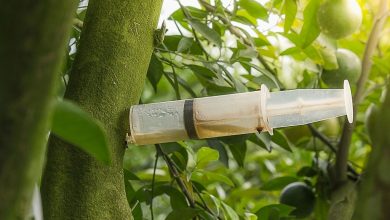The Importance of Waterproofing Membrane in Construction

In the construction industry, the significance of the waterproofing membrane is often overlooked. Hence, water-related issues contribute to 80% of building defects. Here, a waterproofing membrane serves as an easy and cost-effective solution for your construction projects. Since it protects the structural integrity of your building.
This guide will tell you why waterproofing membrane is important or better we can say fundamental in construction.
What is a Waterproofing Membrane?
The waterproofing membrane is a two-component polymer-modified into a thin coating. This flexible cementitious product forms an impenetrable barrier to protect concrete and mortar. Moreover, its excellent adhesion and crack bridging ability prevent water from infiltration. So, you can not deny its importance in different segments of a building.
For instance:
- Foundations and retaining areas
- Roof decks and plant room floors
- Pools, bathrooms, and wet areas
- Balconies, terraces, and external walls
- Car park docks and lift pits
The Importance Of Waterproofing Membrane
Let’s take a look at the benefits of having a waterproof foundation and how it protects your investment.
1. Prevents Leakage
Water leakage may cause structural damage in many ways. For instance:
- Destruction of floor and furniture
- Water stains on the walls
- Attic and ceiling damage
As the saying goes, “prevention is better than cure.”
Just as you take supplements to sustain your health. You need suitable waterproofing chemicals to guarantee the strength of your building. It will save you from major expenses in the long run. As it is more costly to repair damaged flooring, ceiling, and walls than waterproofing.
2. Strengthens the Building Architecture
A waterproofing membrane extends your building’s life span by preventing moisture penetration. Otherwise, the building structure will undergo rusting, corrosion, or rotting.
3. Safety from Air Pathogens
Air movement causes 98% of water vapor movement in building cavities. Air naturally moves through cracks or holes in the building envelope. And moisture travels through an air current. Thus, causing leakage or seepage in the buildings. Waterproofing can fill the paths and stop air and water vapor from causing more damage. It is particularly important for keeping you and your family safe from airborne pathogens.
4. Protection From Moulds
The penetration of water stimulates the growth of fungus and molds in walls and ceilings. This mold and mildew create spores. Further, it results in serious health issues like coughs and asthma. Thus, the waterproofing membrane ensures a healthier environment for you.
5. Long-Lasting Flooring
A waterproofing membrane protects concrete from water damage. This versatile chemical solution is long-lasting and customizable for any space. Whether you need an unyielding surface to withstand industrial work or an elegant entrance to your restaurant, use an epoxy-based waterproofing membrane.
It is useful in the following areas :
- Mechanical spaces
- Commercial kitchens
- Garages
- Restaurants
- Manufacturing plants
6. Reduces Maintenance Cost
Every building requires regular maintenance to sustain its structure. It is wise to invest in preventive measures rather than pay for damage repairs.
However, waterproofing is a one-time investment and an effective preventive measure. Yet, it is the supreme solution to ensure the durability and safety of your building projects.
7. Ensures Long-Term Comfort
Waterproofing is crucial in sensitive and occupied areas. It is because concrete is susceptible to moisture infiltration. Here, you need the SBR chemical to improve the bond strength and resistance of mortars and concrete. Moreover, you can also use it as a sealer and adhesive to add waterproofing properties. It will make your home more comfortable and wholesome to live in.
8. Seals Cracks and Points Of Infiltration
Concrete is a porous material and water can easily penetrate through it by hydrostatic pressure. A waterproofing membrane helps to keep the moisture from intruding into the concrete. Thus, preventing structural damage and corrosion. Here, you can apply an SBR chemical. It is one of the waterproofing chemicals used as an external coating over the material. It improves the properties of mortars, concrete, and screeds.
Where To Apply Waterproofing Membrane
Once you understand the importance of waterproofing in construction you need to know where to apply it for the best results. Moreover, you should pay special attention during construction to ensure reliable waterproofing.
You can apply it to various areas, including:
- Concrete water tanks
- Flat roofs
- Bathrooms
- Swimming pools
- Rooftops
- Landscape and gardens
- Podiums and balconies
- Underground structures – tunnels, parking lots, and basement.
However, consider that waterproofing membrane is one of the primary construction materials and building materials. Even in vapor form, any water entry can lead to great risks and damage. For the same reason, waterproofing is essential for the protection against water in any phase. Be it liquid, gas (humidity), or solid (ice), is vital.
The Application of Waterproofing Membrane
The waterproofing membrane application is the basic system of protection. Depending upon the need and structure, it has three processes for application:
- The positive side (post-applied)
The positive side is an external waterproofing system. Since it requires access to the outside face of your building. In addition, positive waterproofing can be installed after the construction of the wall only. This isn’t always possible and that’s where the negative side and blindside come in.
- Blindside (pre-applied)
As the name suggests, blindside waterproofing is applied before the wall’s foundation. Also, the drainage and waterproofing membranes are installed before the construction.
- Negative Side
Negative side waterproofing is useful for the internal surfaces of the structure. Especially when there is no access or where continuity is not possible.
However, each process is different from the other by the method and product specifications. Ideally, a waterproofing membrane should have the following traits:
- Strength
- Flexibility
- Tear-resistance
- Elasticity
- UV resistant
It is always good to work with a reliable building material consultant. A good consultant helps you determine your project needs. Moreover, he will help you understand the following:
- The best practices for your construction site.
- How the process will work
- The best options to meet your construction needs.
Ensure To Get the Best Waterproofing Service
Keeping up with the maintenance of a building can only add stress. Thus, you need to add a waterproofing membrane to your construction works to stay a step ahead of the mess.
Lastly, if you want to prevent future damage and ensure the integrity of the building, use the SBR chemical and waterproofing membrane manufactured by Ressichem. There you will find guidance from experts to find the right solutions for your projects and advice on the correct use.





